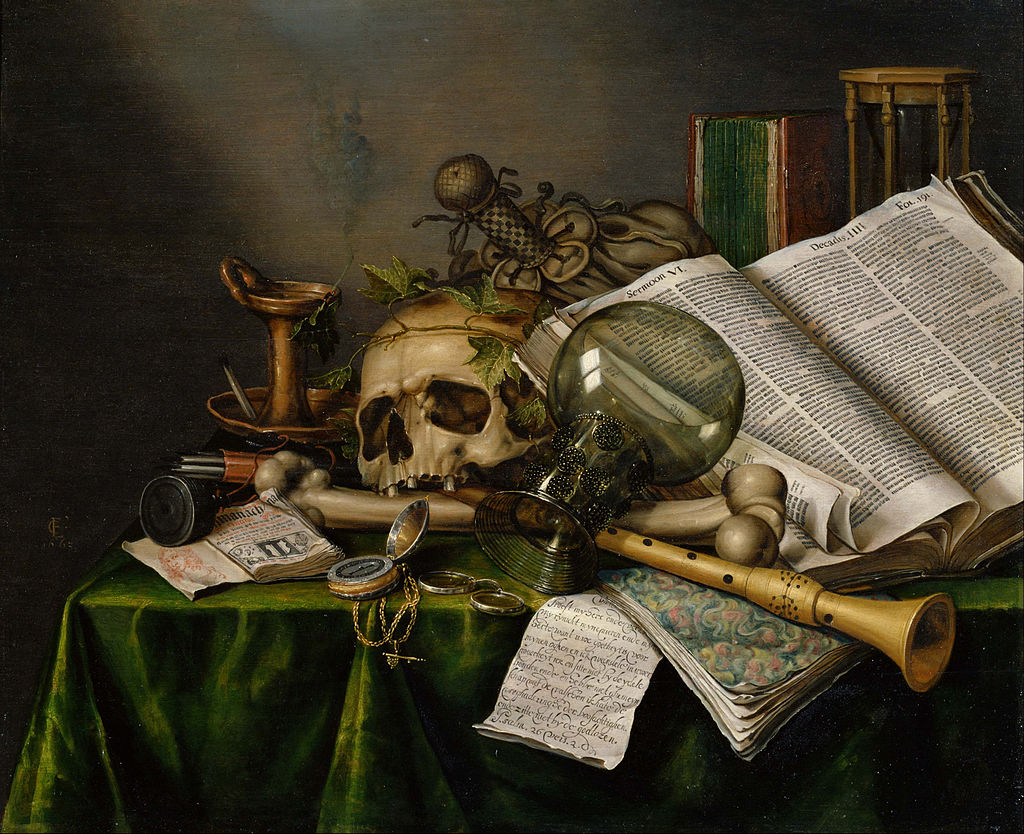Issue 163, Fall 2002
On first picking up a copy of Guy Davenport’s Tatlin! (1970), his first of eight volumes of stories and the book that initiated the major (and ongoing) phase of his career, you find on the cover a lovely, rather conventional telescopic photograph of the moon, three-quarters full, its craters and mares starkly discernible. Yet when you flip the book over, before so much as cracking the spine, you read—beneath a photograph of the author seated at a Greek ruin, his face, like that of the moon, partly obscured by shadow—this note: “front jacket: The Face of the Moon, ‘painted from nature’ by John Russell, c. 1795. Birmingham, The City Museum and Art Gallery.”
You will have stumbled, unwittingly though not by accident, onto the author’s method, for this is a writer who, in the classic modernist style, is incessantly sending us back, reminding us that what seems newest is old, if not beyond time, and that what appears, or is, most radical in art and culture often has for its source “the archaic,” as Davenport has said in a previous interview, “the dawn of things, before betrayals and downstream mud.”
Davenport has published forty-six books of fiction, essays, and poetry, not counting the many to which he has contributed chapters and introductions, and for fifty years he has supplied magazines and newspapers with articles and reviews. He has translated Archilochos, Sappho, Alkman, Herakleitos, Diogenes, Anakreon, Poliziano’s Stanze, the Mimes of Herondas, and in his fiction one can find translations of Rilke, Cocteau, and others. He is also an accomplished visual artist. Six years ago Erik Anderson-Reece’s A Balance of Quinces, a study of Davenport’s graphics and paintings (and one of the most useful and perceptive introductions to his writing), was published by New Directions.
Despite threats of giving up writing after his receipt of the MacArthur “Genius” Fellowship in 1992, Davenport has continued during the past decade to generate, if less prolifically, short stories and essays. His books have never been widely read, by popular standards, but they tend to be deeply read by those lucky enough to find them; he is perhaps as close to being a cult writer as one can come while having been singled out for praise by George Steiner in The New Yorker, yet his work has none of the thinness of the cult writer. For all its strangeness, it seems destined to endure.
Born in South Carolina in 1927 and having lived the past thirty-nine years in Lexington, Kentucky, Davenport has spent most of his life in the American South, but it would be hard to imagine a writer for whom the regional tag embraced by, or forced upon, so many of his contemporaries is less appropriate. His milieu has always been the world, his period the span of time between the Aurignacian, when the first daubs of pigment were applied at Lascaux, and this morning; his characters come from wherever people have fought to assert feeling and intelligence against tyranny and “illiteracy,” a word that Davenport repeatedly uses in the somewhat specialized sense of cultural oblivion. These characters, with few exceptions, are artists and philosophers, but Davenport’s heroes are most often the crushed, the silenced, the annihilated, those whose triumph consists solely in the survival of some fragment of their ideas or of their example.
A painterly perception is one of the constants in his writing. It is Davenport who notices that if you set any of James Joyce’s books on its spine and let gravity open it to the center, you will find a verbal allusion to “The House that Jack Built” and thereby (as Davenport shows) to the Labyrinth. It’s he who writes, in A Balthus Notebook (a short volume singled out by the painter himself as “an exception among the texts about him” for its sharp, non-moralistic eye), that “in all of Balthus I find no clocks.” He is a master of the idiomatic sentence that seems commonsensical until it is read with the concentration that went into shaping it, at which point it reveals its depths, as when he writes, in the postscript to his Twelve Stories, “Making things is so human that psychology and philosophy have gotten nowhere in trying to account for it.” Another recurrent Davenport theme: that what is most essential to humanity lies at the point furthest from conventional scrutiny, where it remains inaccessible to minds bent on categorizing and, in the end, controlling it—safe, and sacred, in its unknowability.
This interview took place over the telephone and during three evenings in front of the fireplace at Davenport’s house in Lexington, throughout which he drank black coffee and smoked Marlboro Reds, “not inhaling.” His tomcat, Ejnar (the name reflecting Davenport’s confessed “Danophilia, or -mania,” a regular feature of his work) spent the hours in Davenport’s lap or weaving through his legs. The living room is well described by Erik Anderson-Reece as “a monument to high modernism.” Books and paintings go from floor to ceiling, and several times during our conversations Davenport suddenly popped up from his chair, pulling down a book from one of the shelves in order to illustrate a point. Off to the right, as one enters the door, is an open study containing a table built according to a Rietveld design, on which sits an electric typewriter. Also in the study is the color copier used by Davenport in making his illustrated letters, a custom he borrowed from his old correspondent, James Laughlin. (The first page of a letter from Davenport will typically have, in the place of letterhead, a photograph or drawing—either one of his own or an image from somewhere that has interested him—followed by a short caption expanding on or explaining it.)
A politely but stubbornly private man, Davenport’s reluctance to express himself publicly other than in his work could account for the relatively few published interviews with him. Frequently, when some question strayed too close to what he deemed personal, he would interrupt by saying, matter-of-factly, “I thought we were talking about my work,” a boundary that was respected throughout. “Live unknown” (Epicurus) is one of his mottoes. Suffice it to say that he is not married but has been sharing his life for the past thirty years with Bonnie Jean Cox, whose name pops up occasionally in the books. He maintains a vigorous and far-flung correspondence. Davenport’s tone in conversation tends to be not pedantic but didactic, as befits a man who made his living lecturing to undergraduates. In spite of that, he does suffer fools, as demonstrated by his graciousness and cooperation during the months it took to complete this interview.
INTERVIEWER
Let’s begin with a homely question: How do you spend your days?
GUY DAVENPORT
Downstairs, writing and drawing; upstairs, painting, or reading Rex Stout, P.G. Wodehouse, and Georges Simenon. Talking with visitors and friends. In the backyard there’s a studio, designed and built by Keith Plymale for an architecture seminar. Cement floor, tin roof, nine windows, one at floor level for observing “sunlight on a wall” (a phrase from Tatlin! that Keith wanted to build into the structure), a small square window at the back, with a painted-wood still life in it (jug and apple), and a slender window in front, with a shelf outside, for cats to sit on (though no cat has). The neighbors call it my playhouse.
INTERVIEWER
What habits do you have as a writer? Do you keep to a schedule?
DAVENPORT
I like to believe that I don’t think of myself as a writer. I am an amateur. Back when I was teaching I wrote when I could. Weekends were good typewriter time. Now, it’s whenever I feel there’s something to be put on paper. I don’t care what time it is, though I always write in the notebooks at night.
INTERVIEWER
Are the notebooks central to your method?
DAVENPORT
Yes, there is a kind of gestation period, which I suppose is common to all writers. The thing is to get a . . . well, I was about to say “plot,” but a lot of my stories use the old Joycean epiphany.
INTERVIEWER
What’s the typical progress of an idea, then, from being something you’ve jotted down in the notebook to finding a place in one of your stories or essays?
DAVENPORT
Well, who knows? I suppose you wait until it’s irresistible, then start working on it one way or another. When that time comes, I move from longhand to the typewriter.
INTERVIEWER
Do you enjoy writing? Is it pleasurable?
DAVENPORT
Sometimes. What do you mean by “enjoy”?
INTERVIEWER
Well, does it come easily, or . . .
DAVENPORT
There are stories that just go down on the paper, which I’m not valuing very much, because I know where they’re going. “The Richard Nixon Freischütz Rag,” for instance, I simply made up in an afternoon. And it turned out to be the most reprinted of my texts.
INTERVIEWER
But you tend to value it less?
DAVENPORT
Oh, if other people think something of it, I can think something of it. I don’t think there’s any magic in spending weeks and weeks and weeks on something. That usually makes it worse.




